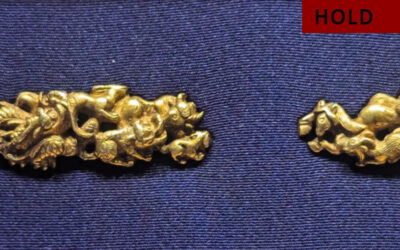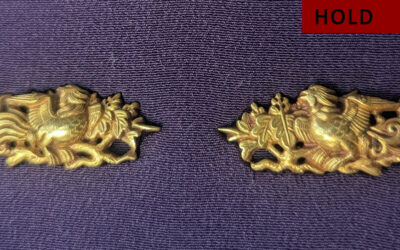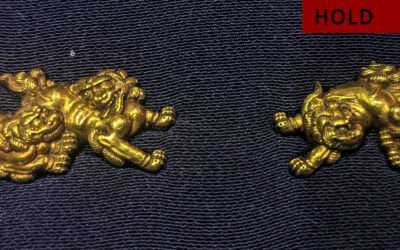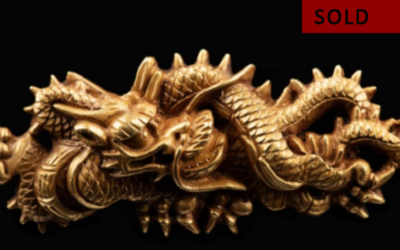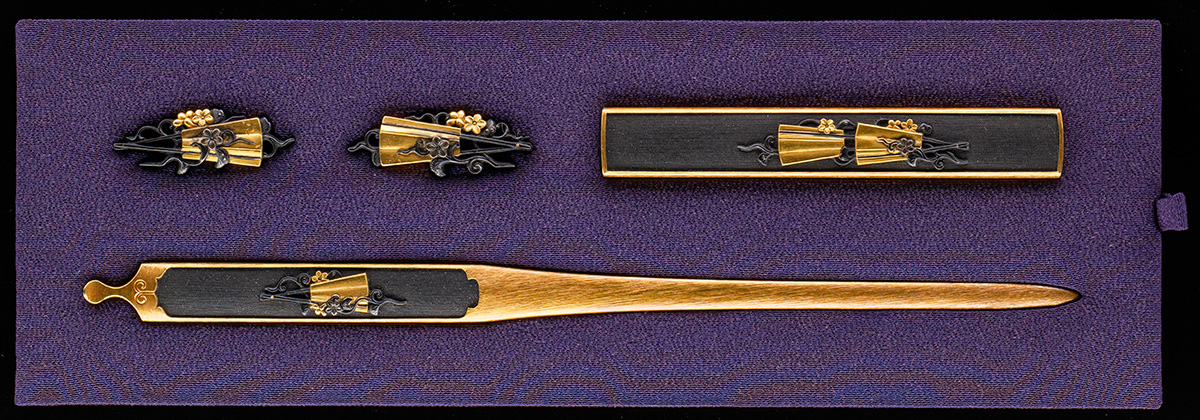
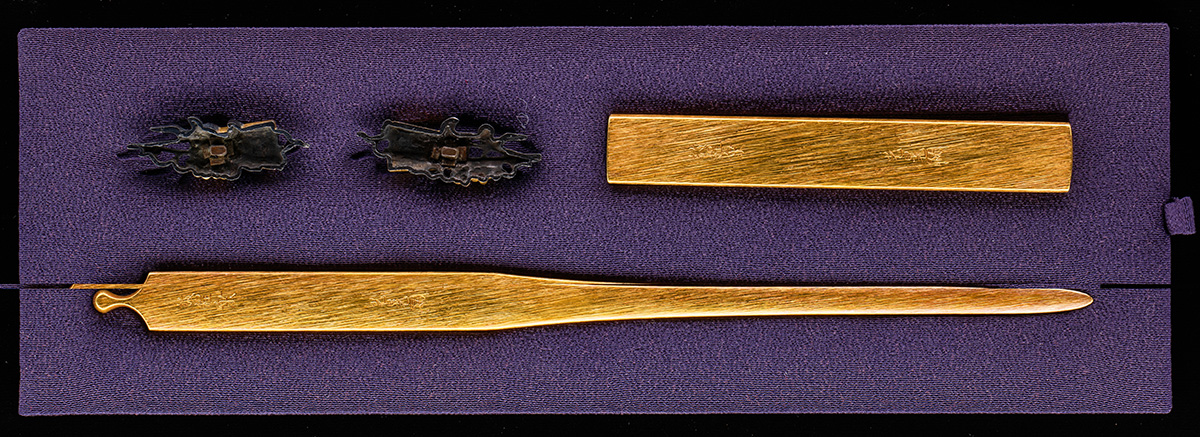
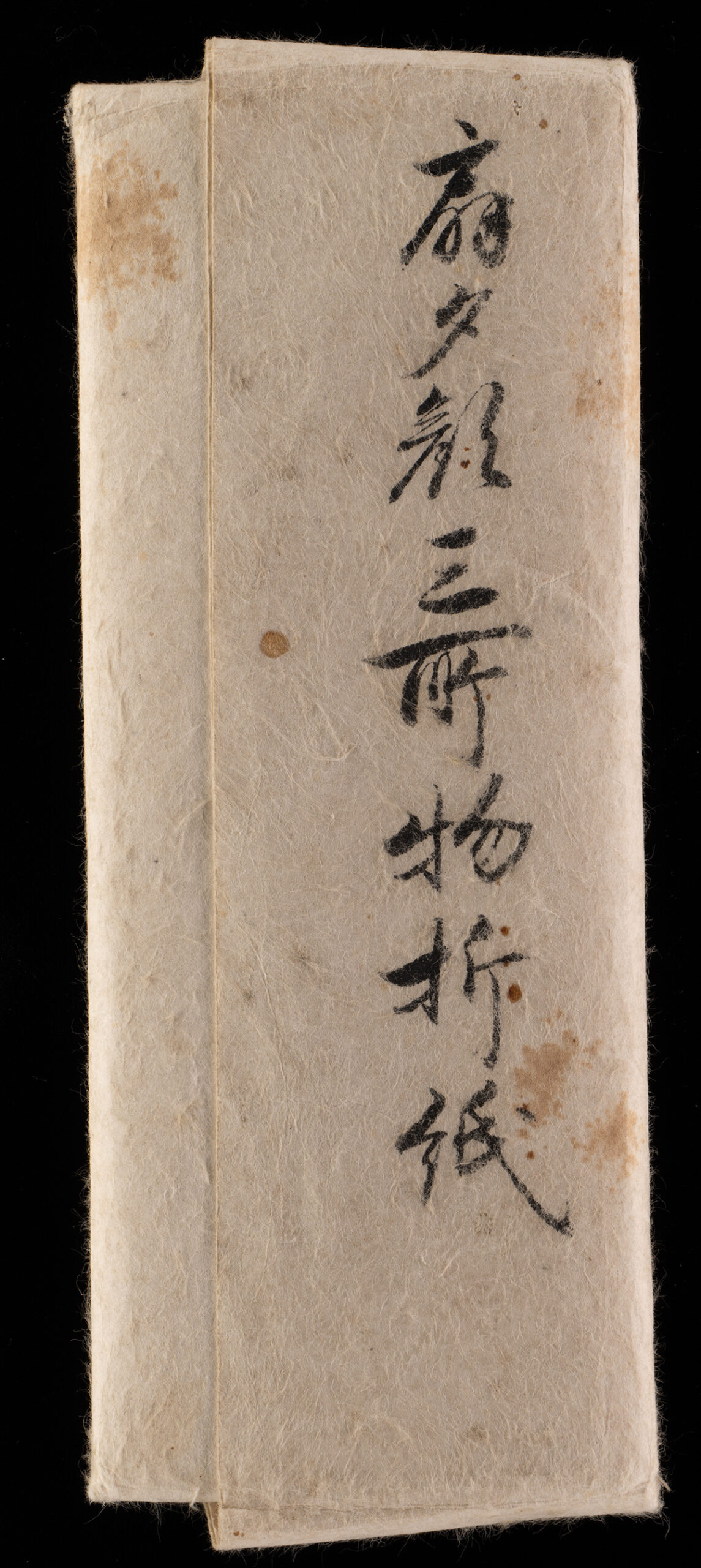
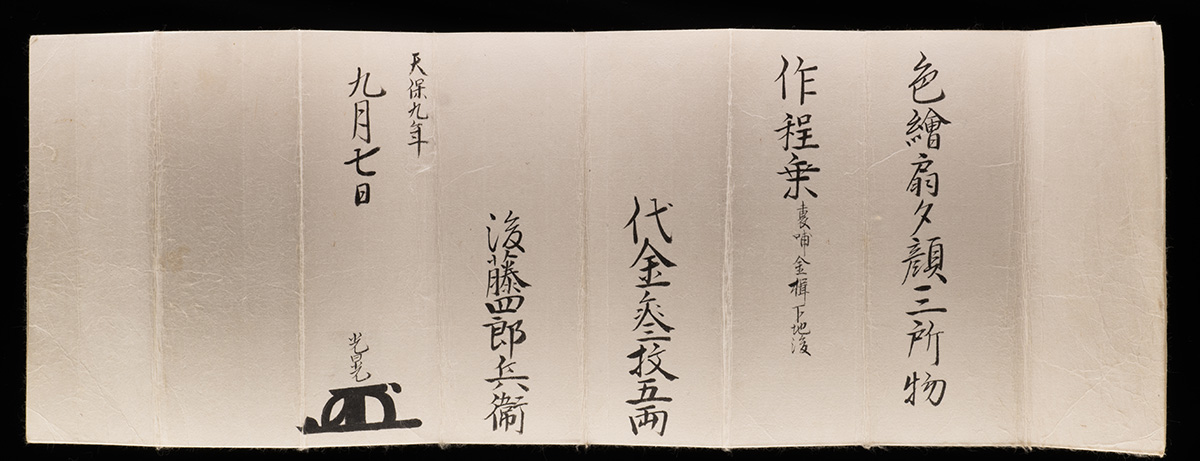
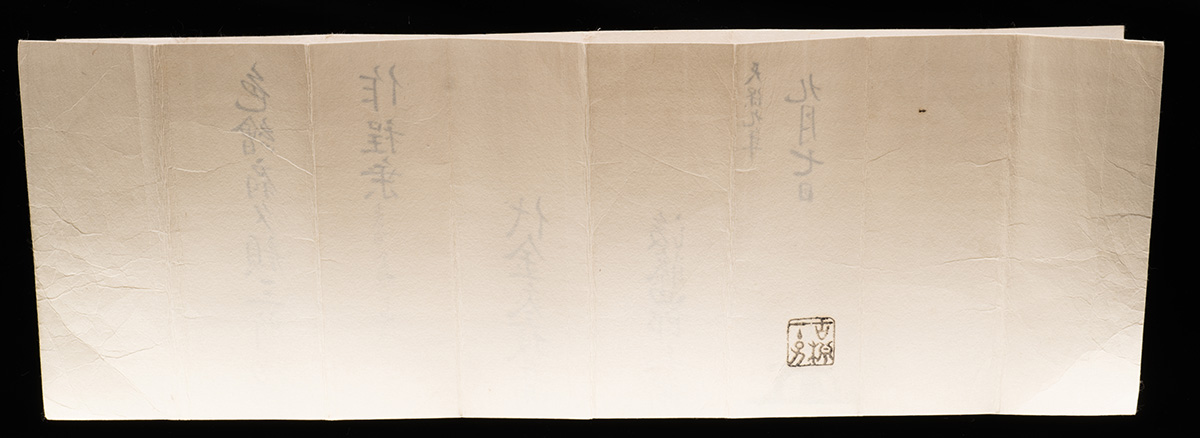
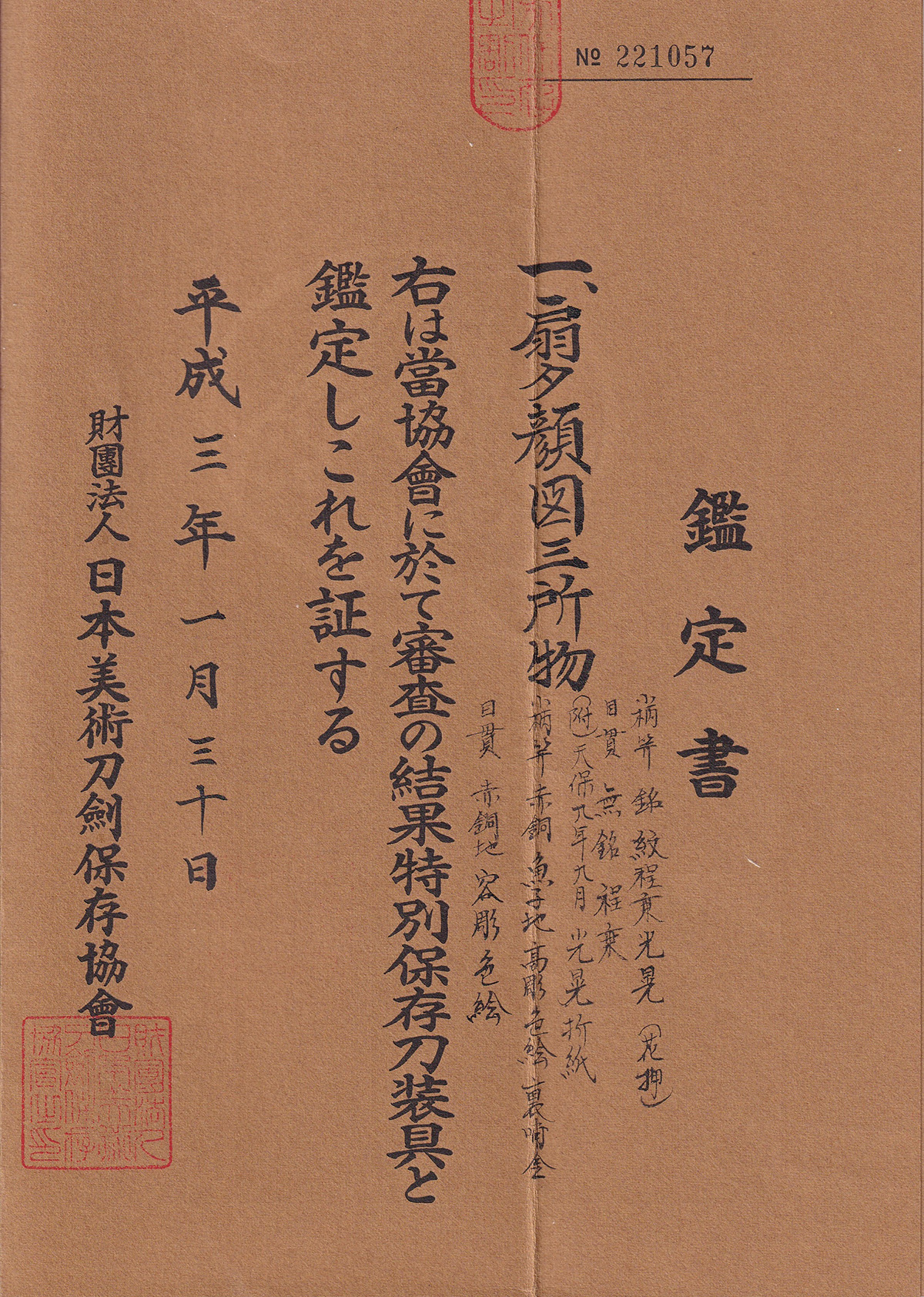
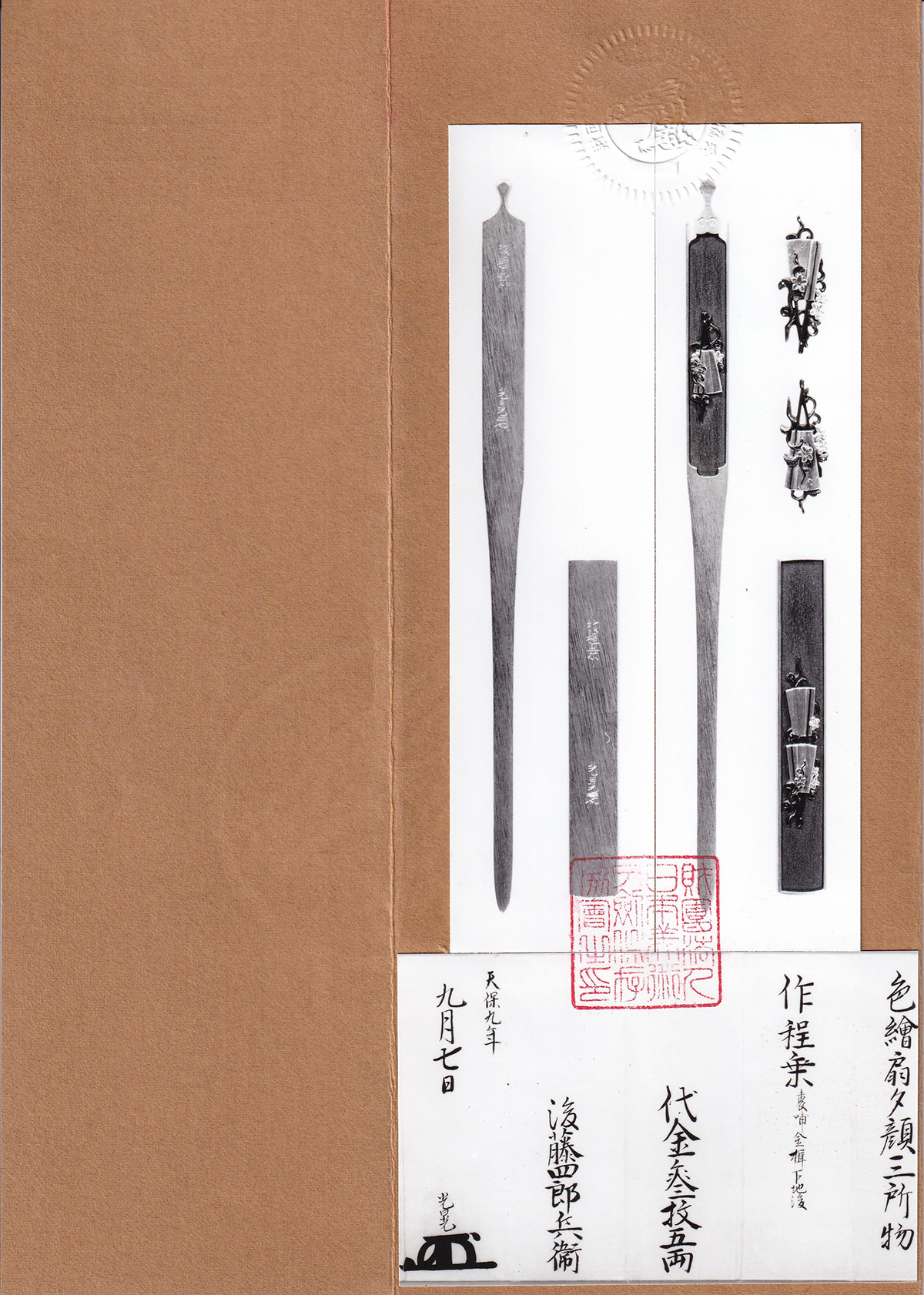
Project Info
Project Description
Mitokoromono by Gotō Teijō – Folding Fans and Cherry Blossoms
Edo Period, Mainline Gotō School | NBTHK Tokubetsu Hozon
This superb mitokoromono—comprising kozuka, kogai, and menuki—is attributed to Gotō Teijō (後藤程乗), the 11th-generation master of the mainline Gotō family and one of the most distinguished metalworkers of the mid-Edo period. The set is formally recognized with Tokubetsu Hozon papers by the NBTHK, attesting to its exceptional quality, preservation, and historical significance.
The theme is one of poetic refinement: folding fans (ōgi or sensu) accompanied by scattered cherry blossoms (sakura)—both enduring symbols of elegance, transience, and seasonal beauty in classical Japanese aesthetics. Executed in high-relief gold carving (takabori iroe-kinzōgan) on a rich shakudō nanako ground, the design exemplifies the technical and compositional restraint for which the Gotō lineage is celebrated.
Each element of the set is meticulously rendered. The fans are folded and layered with subtle variation, suggesting movement or breeze, while the blossoms—some fully open, others fallen—introduce a lyrical quality that evokes the fleeting beauty of spring. The menuki display the most sculptural vitality, intended to complement the grip of the sword, while the kozuka and kogai reflect a balanced and measured layout, emphasizing the interplay between space and ornamentation.
Artist and Lineage
Gotō Teijō worked in direct succession to the headship of the Gotō mainline, a family whose history as official omei-kō (authorized metalworkers) to the Tokugawa shogunate positioned them at the pinnacle of Edo-period sword furnishing culture. Teijō’s style upholds the classical compositional ideals set forth by his forebears—particularly Gotō Yujō—favoring elegant asymmetry, purity of form, and impeccable surface treatment. His work is especially prized for its sharp detailing, controlled energy, and reverent execution of time-honored motifs.
The absence of signature (mumei) is customary in Gotō house production, particularly for commissioned mitokoromono where authorship was understood through lineage and transmission rather than individual branding. The Tokubetsu Hozon certificate affirms both the attribution and the aesthetic merit of this ensemble within the Gotō corpus.
Details
-
Artist: Gotō Teijō (後藤程乗), 11th-generation mainline
-
Components: Kozuka, Kogai, Menuki (full mitokoromono set)
-
Motif: Folding fans (ōgi) and cherry blossoms (sakura)
-
Material: Shakudō with gold high-relief carving (iroe-takabori)
-
Ground: Nanako
-
Period: 1603–1673
-
Attribution: NBTHK Tokubetsu Hozon
This mitokoromono is not only an outstanding work of decorative metalwork, but a poetic reflection of seasonal sensitivity and classical taste—an ideal expression of Gotō refinement at the height of Edo-period elegance.

